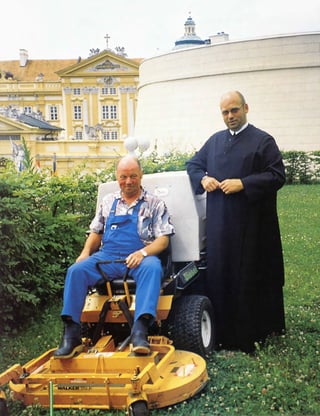The rich color of its buildings and grounds represent more than just a well-kept piece of Baroque history. They serve as a beacon to the largest cultural center in Europe. About 80 km outside of Vienna along the Danube River sits Stitt Melk, a monastery built in the 8th century, which now serves as a gathering place for tourists throughout Europe.
 For centuries. students have come to Melk to learn about the Presbyterian faith. As Austrian culture changed and monasteries became less able to survive on their agricultural work, Melk shifted its financial endeavors to tourism. This meant that the grounds and buildings needed to be kept better than they ever had.
For centuries. students have come to Melk to learn about the Presbyterian faith. As Austrian culture changed and monasteries became less able to survive on their agricultural work, Melk shifted its financial endeavors to tourism. This meant that the grounds and buildings needed to be kept better than they ever had.
A key tool is the Walker mower. According to Father Adolf, a 25-year teaching veteran here, whether mowing the manicured lawns and sports fields, or blowing snow in the winter, the Walker mower does the job. He says, "The big mowers and the small mowers were taking too long. The Walker cut those times in half."
Lorenz Alois, a six-year employee, and some of the young priest students maintain the 50,000 square meters of grass at Stitt Melk. "The students consider riding the Walker to be a real honor," explains Father Adolf. "But they only get to when I am not mowing with it."




 Site Search
Site Search



